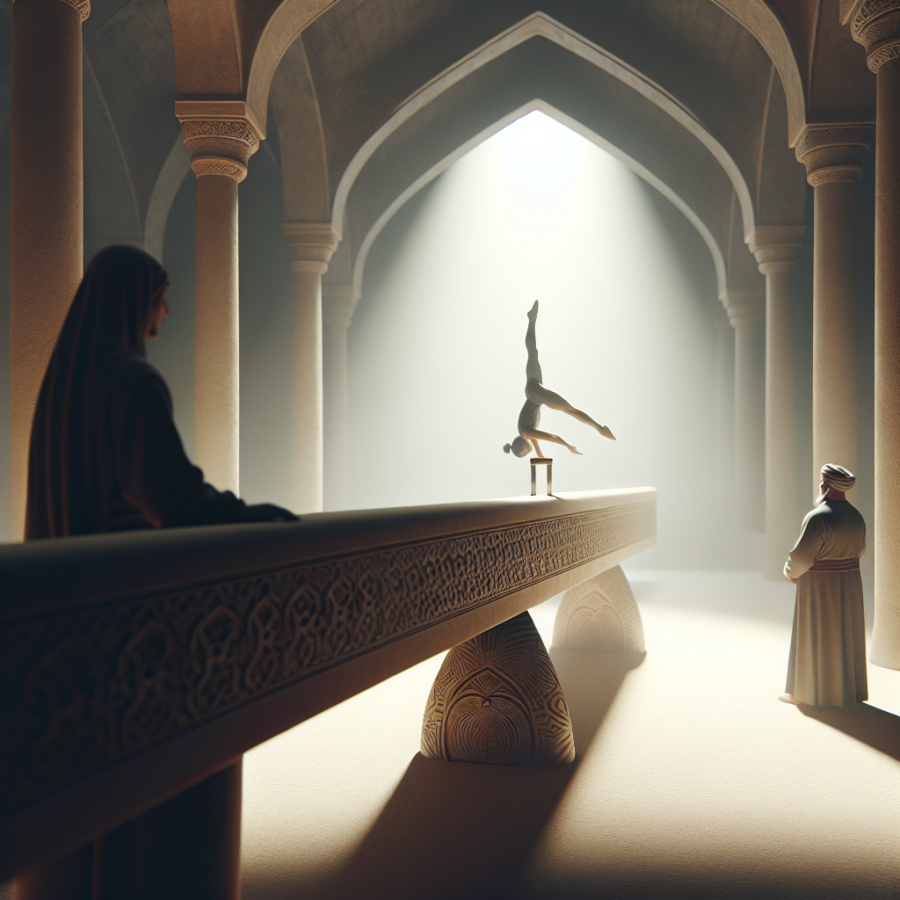Advanced Techniques for Graceful Beam Routines
Advanced Techniques for Graceful Beam Routines
In the quest to master the balance beam, one of the prime objectives for gymnasts is achieving a level of grace that belies the difficulty of the skills being performed. This elegance is often the difference between a good routine and a great one. To elevate the artistic quality of beam work, several advanced techniques can be integrated into training and performance.
Work on your core strength: Core stability is paramount for a graceful balance beam routine. Exercises such as planks, V-sits, and Pilates can build the necessary core muscles. Strong core muscles lead to smoother transitions between moves and help maintain control during leaps, jumps, and turns.
Perfect your posture: Excellent posture is essential for grace on the beam. Shoulders should be down and back, with a lifted chest and a head held high. This posture not only appears more elegant but also helps with balance and alignment. Practicing ballet barre exercises can help improve posture.
Refine your movements: Every gesture on the beam should be intentional and refined. From pointed toes to extended fingers, the details matter. Working with a dance coach or taking ballet classes can teach body awareness and the precision of movement that will enhance the overall presentation of your routine.
Use your eyes: Where you look during your routine can guide your movement. Focused and deliberate eye movement not only engages the judges and audience but also sets the direction for your turns and skills, helping to stabilize your balance and ensure precise landings.
Develop fluid connections: The mark of a graceful routine is the seamless flow from one skill to another. Transitions should be smooth, with each movement leading naturally into the next. Choreography should be crafted to allow for this flow, and ample practice time should be dedicated to smoothing out connections between difficult skills.
Emphasize dance elements: Incorporate dance elements that complement the acrobatic skills. Choose leaps and jumps that match your personal style and abilities. They should be executed with full amplitude and control. Enhance these movements with expressive arm movements and head positions to create an artistic effect.
Manage your momentum: Understanding how to control momentum, especially after powerful elements, contributes greatly to a routine’s grace. It's crucial to know when to allow momentum to carry through a skill and when to contain it to prepare for the next movement smoothly.
Control your breathing: Breathing techniques are often overlooked but play a critical role in the execution of a graceful beam routine.
Read also:
Gear Up for Glory: Inside the Wheelstand Showdown
Developing Fundamental Skills for Beam Stability
Developing fundamental skills for beam stability is an integral part of mastering the balance beam in gymnastics. It serves as the foundation upon which all other beam techniques are built, enabling athletes to progress to more advanced movements with confidence and poise. To achieve perfect balance and poise on the beam, gymnasts must focus on a series of core stability skills that enhance control, balance, and body awareness.
The journey to beam stability begins with mastering the basic mount. A gymnast must learn to approach the beam with a clear mindset and precise technique. This involves a solid jump or step onto the beam, maintaining a tight body line from the moment of contact. Once on the beam, the athlete must practice finding the center of balance immediately, distributing their weight evenly on both feet.
After the mount, the emphasis shifts to static skills, including scales and holds. These exercises require the gymnast to maintain a fixed position on the beam for a set amount of time. It's crucial to engage core muscles, keep the hips squared, and align the shoulders with the beam throughout these holds. Static skills not only improve balance but also build the muscular endurance needed for longer beam routines.
Body alignment is paramount when developing stability. An athlete should always be aware of their body positioning, from the tips of their toes to the crown of their head. Proper alignment ensures that movements are efficient and that the center of gravity is kept over the beam. Drills that encourage alignment include straight jumps, relevés, and small kicks, each performed with attention to a straight line running through the gymnast's body.
Another key component in attaining beam stability is learning to fall correctly. Even elite gymnasts experience falls, but what matters is how they fall to minimize injury risk and recover quickly. Practicing safe dismount techniques teach gymnasts how to twist their body and land safely in case of a slip or loss of balance.
Dynamic skills occupy a special place in beam training and are essential for developing stability. These include jumps, leaps, and turns where the gymnast must maintain control while pushing off and landing back on the narrow surface of the beam. Improving proprioception—or the body's ability to sense its position and movement in space—is critical during dynamic movements. This can be enhanced through exercises like beam walks with closed eyes or performing simple skills on a floor beam before transitioning to a high beam.
Endurance and muscular strength, particularly in the core and lower body, cannot be overlooked.




